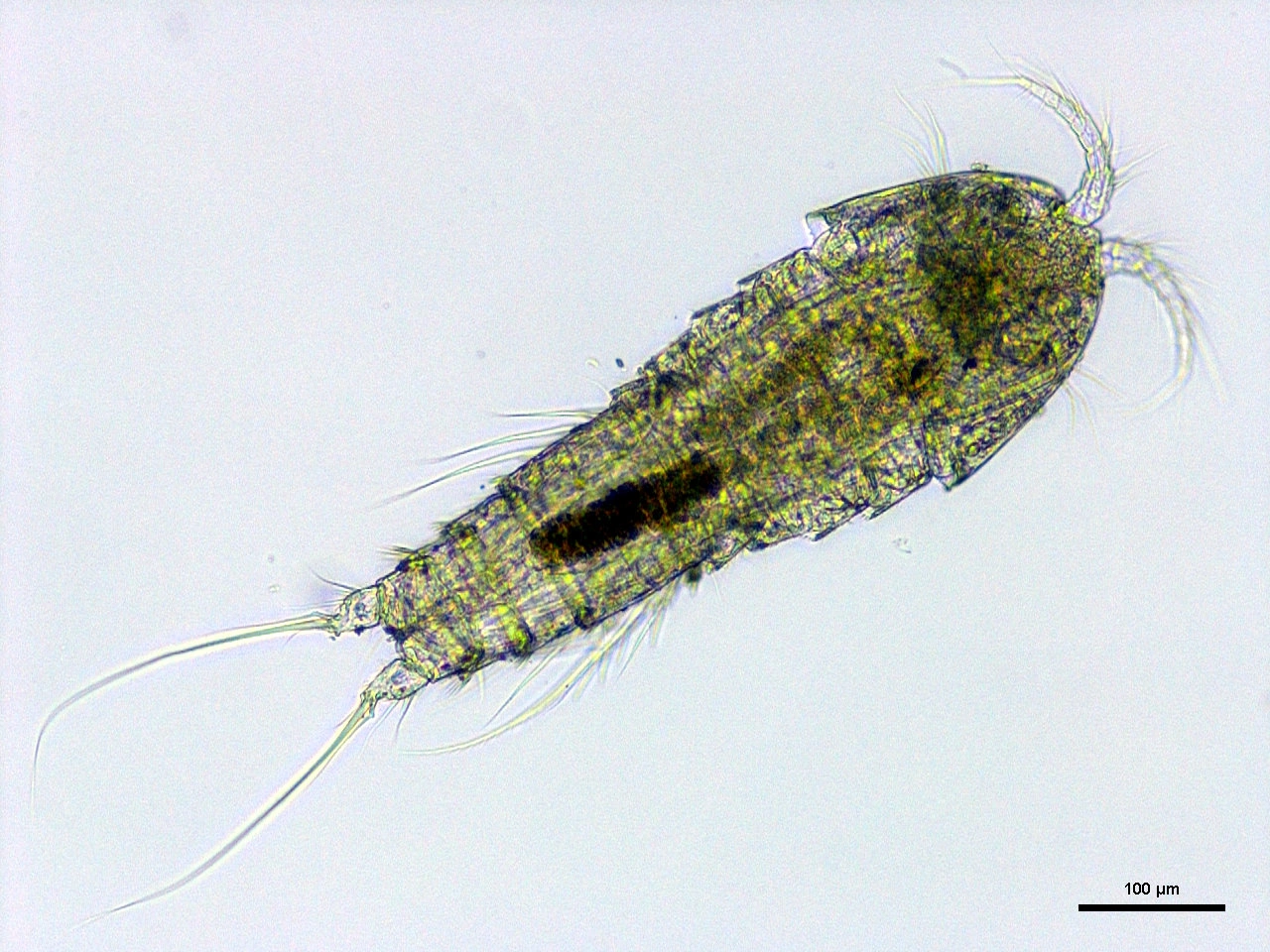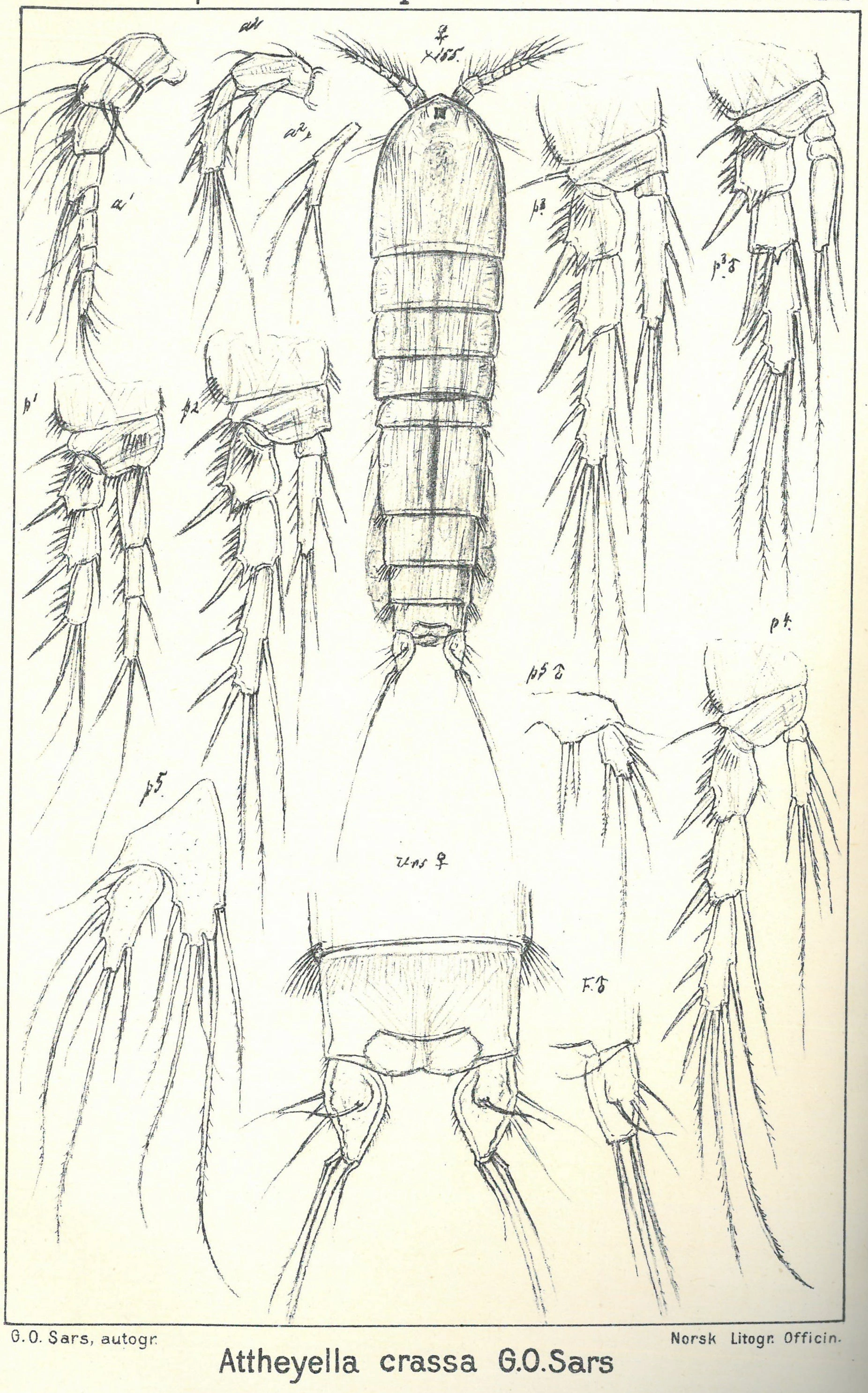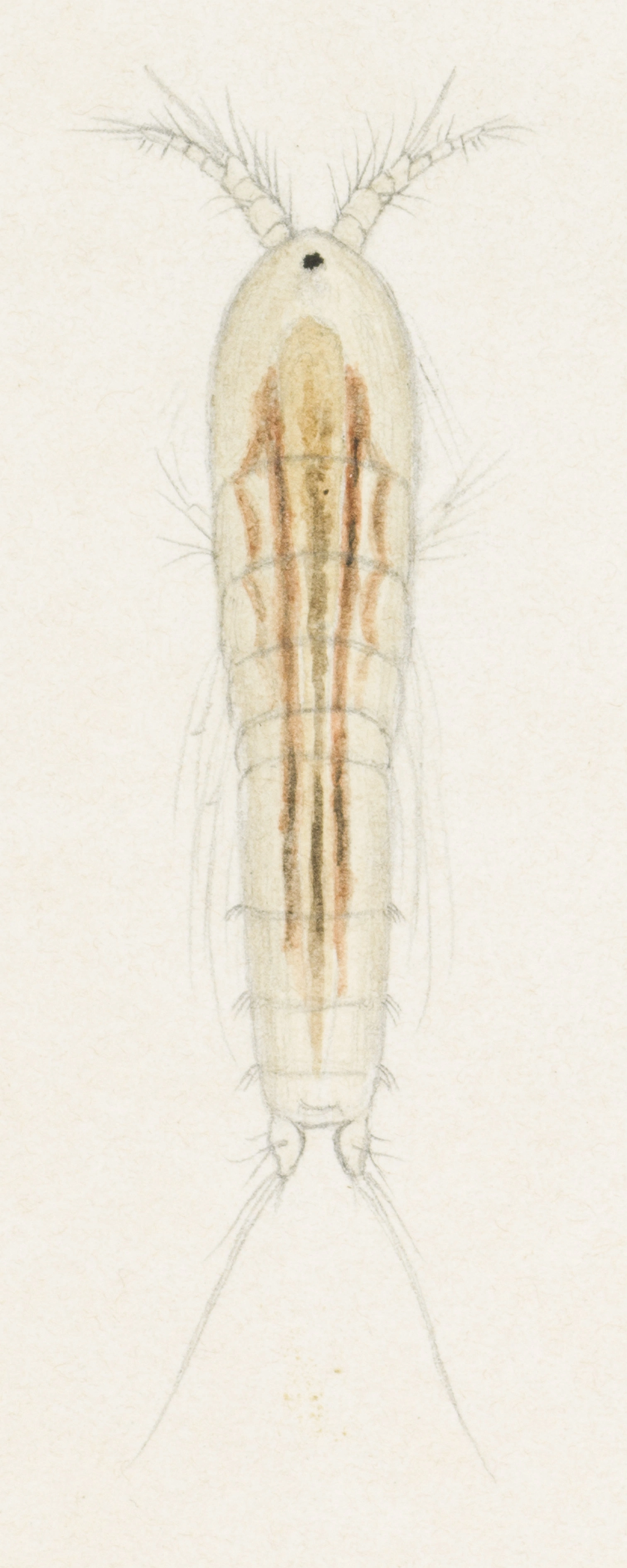Attheyella crassa
Attheyella crassa is comparatively rare in Norway, being short and thick and having a cylindrical form. It is found in a great variety of habitats.
Key characteristics
Attheyella crassa has a body which is tapering towards the caudal ramus. The posterior edges of somites are serrated both dorsally and laterally. Both exopod and endopod in the first leg are 3-segmented. Its rostrum is small. Operculum is not prominent, having a number of small spines. Caudal ramus is about 1.5 times as long as wide, and is sharply constricted posteriorly, with a dorsal hump. The caudal ramus in the male is different from the female, being rectangular, and about twice as long as wide. The antennule consists of eight segments. The fourth segment in the male antennule is especially swollen.
Female: Length 0.50–0.65 mm
Male: Length 0.38–0.47 mm
Ecology and distribution
In Norway it is generally found in the littoral of large lakes. All records so far are from South Norway and located between 5 m and 217 m a.s.l. The species has a Palearctic distribution, and can be found in different habitats (lakes, stony shores, permanent and temporary ponds, running water, leaf litter, terrestrial soil habitats like grasslands, mosses, hyporheic habitats, subterranean waters and caves). It is an oligosaprobic and eurythermal species.



